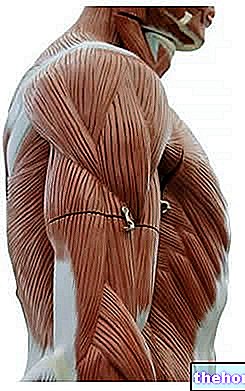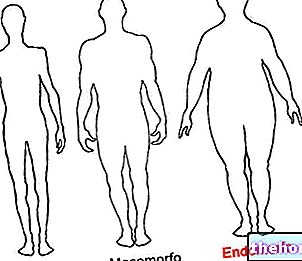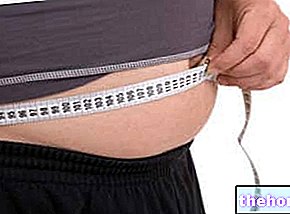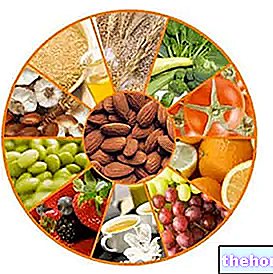Premise
The following indications are for informational purposes EXCLUSIVELY and are not intended to replace the opinion of professionals such as a doctor, nutritionist or dietician, whose intervention is necessary for the prescription and composition of PERSONALIZED food therapies.

Polycystic ovary syndrome is a disease that affects the ovaries (female reproductive system). The disorder recognizes a rather complex etiology, often multifactorial, and - although some of the main risk factors are well understood - the triggering of the disease is still poorly defined.
The polycystic ovary syndrome is associated with infertility, due to incomplete ovulation, and the formation of ovarian cysts due to the metamorphosis of immature follicles; this is attributable to some hormonal imbalances that favor the increase in androgens at the expense of FSH. consequently, generally appear: amenorrhea / irregular cycles, hirsutism and obesity (the latter often constitutes more a risk factor than a real complication). The polycystic ovary is "often" linked to:
- Family predisposition
- Insulin resistance
- Obesity
The pathological mechanism of polycystic ovary syndrome is based on the over-production of androgens. This happens because:
- The pituitary gland releases an excessive amount of LH which stimulates the ovarian production of estrogens, which are then converted into androgens by the adipose tissue (primary, congenital or idiopathic pituitary defect)
- Excessive transformation of female sex hormones into male sex hormones by the excess adipose tissue (nutritional and / or metabolic defect)
- Appearance of insulin resistance of the ovary which stimulates the ovarian production of estrogens which are then converted into androgens by the adipose tissue (metabolic, nutritional and / or congenital defect).
NB. Androgens in turn stimulate the release of LH by perpetuating the pathological mechanism of polycystic ovary syndrome.
At the same time, there is a reduction in FSH, which determines infertility, and, at times, an increase in prolactin. Overweight and obesity are found in almost 50% of cases of polycystic ovary syndrome.
To reduce the symptoms and complications of the polycystic ovary it is possible to intervene pharmacologically and / or surgically; on the other hand, in the presence of insulin resistance and / or obesity, the hypocaloric diet with a low glycemic index and motor therapy are ESSENTIAL desirable.
Diet for the polycystic ovary
First of all, remember that overweight and insulin resistance, in addition to appearing among the causes / risk factors for polycystic ovary syndrome, are also closely related to each other. Overweight (or obesity) and insulin resistance can be one of the causes. of the other (depending on the specific case), even if insulin resistance often has hereditary origins (but the fact remains that it is aggravated by the accumulation of fat).At the same time, in insulin resistance, due to the reduced peripheral uptake of the hormone, there is a hyper-production of the same by the pancreas and a consequent peak in the blood. Insulin is an anabolic hormone that also acts on the accumulation of fat in adipocytes and excessive or protracted concentrations tend to favor weight gain.
Having said that, the diet for the polycystic ovary must have a low glycemic index and (if it is associated with overweight) with a low energy intake. The fundamental concepts on which it must be based are:
- Low calorie (in case of overweight): the diet for the polycystic ovary must provide a quantity of calories that allows you to lose weight about 3.0kg per month: to do this it is advisable to take about 70% of the energy necessary to maintain weight
- Nutritional balance: the breakdown of energy macronutrients should include:
- 25% lipids (30% in the growing subject)
- Saturated fatty acids ≤10% of the total energy
- Essential fatty acids ≥2.5% of the total energy
- A variable amount of protein based on age, sex, body composition, etc. (0.75-1.5g / kg of desirable physiological weight)
- At least 30% made from food of animal origin (to ensure biological value)
- The remaining energy in carbohydrates
- Simple carbohydrates comprised between 10-16% of the total energy (10% for those suffering from diseases related to sugar metabolism, 12% for the healthy and up to 16% for those in growth)
- Ensure a cholesterol content ≤300mg / day
- Ensure a dietary fiber content of about 30g / day; it is necessary to moderate the glycemic index of meals
- The distribution of meals must include at least 5-6 meals per day and the portions must be carefully established; in this way it is possible to guarantee a lower glycemic load
- Choice of low glycemic index (GI) foods with a combination of high carbohydrate content foods with good amounts of dietary fiber. Also, it is best NOT to dissociate macronutrients to ensure slow absorption and "further moderation of the glycemic index". Prefer sources of whole and natural carbohydrates; reduce those refined or processed.
- To facilitate the path of weight loss and restoration of peripheral insulin sensitivity, it is advisable to start a "regular physical activity.
There are no useful dietary supplements for the polycystic ovary.
Example Diet against the Polycystic Ovary Syndrome
Young housewife suffering from polycystic ovary; in expectation of pregnancy, she must treat the syndrome with drugs and moderate both the obesity and the insulin resistance she suffers from.
Example Polycystic Ovary Diet - Day 1
As can be seen from the nutritional translation table, the goal of diet therapy has been fully achieved; the energy is only 17.9kcal higher than the predetermined NORMAL calorie (an oscillation of about 30.0kcal is tolerated), the total simple sugars are lower than the average of the recommended rations and the fibers are around 30.0g / day. As far as proteins are concerned, despite being proportionally distributed in a suitable manner (> 30.0% of animal origin), they are slightly higher than the maximum recommended intake ; we remind you that the reference ranges (LARN) are SAFETY intervals and that, in the absence of pre-existing hepato-renal pathologies, a similar gap should not cause any repercussions on the state of health. Furthermore, given and considered the nutritional priority of the diet for the polycystic ovary (low calorie, simple carbohydrates,> fiber,
Example Polycystic Ovary Diet - Day 2
Example Polycystic Ovary Diet - Day 3
Example Polycystic Ovary Diet - Day 4
Example Polycystic Ovary Diet - Day 5
Example Polycystic Ovary Diet - Day 6
Example Polycystic Ovary Diet - Day 7
Other articles on "Example diet for the" polycystic ovary "
- Polycystic ovary: does it make you fat? Diet for the polycystic ovary
- Polycystic ovary
- Polycystic ovary: diagnosis and therapy
- Drugs for the treatment of Polycystic Ovary Syndrome
- polycystic flow, insulin resistance and nutrition



















-nelle-carni-di-maiale.jpg)








